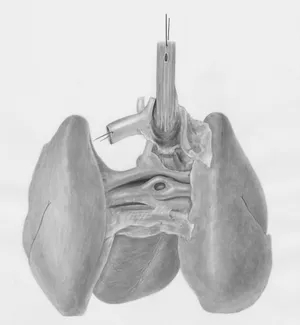March 30, 2025
The Trolley Problem: An Adaptation
Exploring how the Trolley Problem will be more prevelant in healthcare

With the rise of AI, ethical concerns have become increasingly significant. One critical consideration for AI developers is the variation in ethical values across different cultures. For instance, some cultures regard animals as equal to—or even more important than—humans, while others place a much higher value on human life. In one culture, it may seem unthinkable for a self-driving car to choose to save a pack of dogs over a human, whereas in another, allowing harm to animals might be viewed as deeply unethical. These cultural differences are not hypothetical—global research has shown that ethical preferences in life-and-death scenarios involving autonomous vehicles differ widely. For example, countries in the “Southern” moral cluster (including many Latin American and French-influenced regions) showed a much weaker preference for sparing humans over animals compared to Western and Eastern clusters1.
Using AI to Determine Organ Recipients

The study by Awad et al.1 demonstrated that cultural values significantly influence moral decision-making, particularly in scenarios involving the value of human life. Some cultures placed greater importance on older individuals, while others prioritized the young. Similarly, certain societies favored individuals with higher social status or those who obeyed the law. These findings highlight the potential to use such insights in designing fair and culturally aware priority models for organ allocation. However, further research is necessary to ensure these models align with the values of the communities where they are implemented. This approach not only respects cultural sensitivities but also avoids imposing any perception of moral superiority.
Autonomous Driving in Healthcare

With the rise of autonomous delivery robots, the automation of stretchers and patient transport may soon become a reality. However, for this to be effective, the system must be able to actively monitor patient conditions and assess priority levels in real time. I imagine a future where the entire hospital is smart—a system where everything can communicate with everything else. For example, if a patient arrives requiring immediate surgery, the system could autonomously schedule the procedure, coordinating the surgeon, staff, room, and equipment. Once the patient arrives, an autonomous stretcher could transport them from the ambulance to the operating room, seamlessly coordinating with doors and elevators. Imagine the elevator arriving on the correct floor with its doors open just as the stretcher approaches. Additionally, this priority system could help manage unavoidable resource bottlenecks with efficiency and fairness.
The images used in order of appearance: 234.
Footnotes
-
Awad, E., Dsouza, S., Kim, R. et al. The Moral Machine experiment. Nature 563, 59–64 (2018). https://doi.org/10.1038/s41586-018-0637-6 ↩ ↩2
-
Photo by Gary Walker-Jones on Unsplash ↩
-
Lungs and part of the circulatory system by Wetselaar, H.G, (1926-) - Leiden University Libraries, Netherlands - Public Domain. ↩
-
Photo by Amaury TRAVER on Unsplash ↩